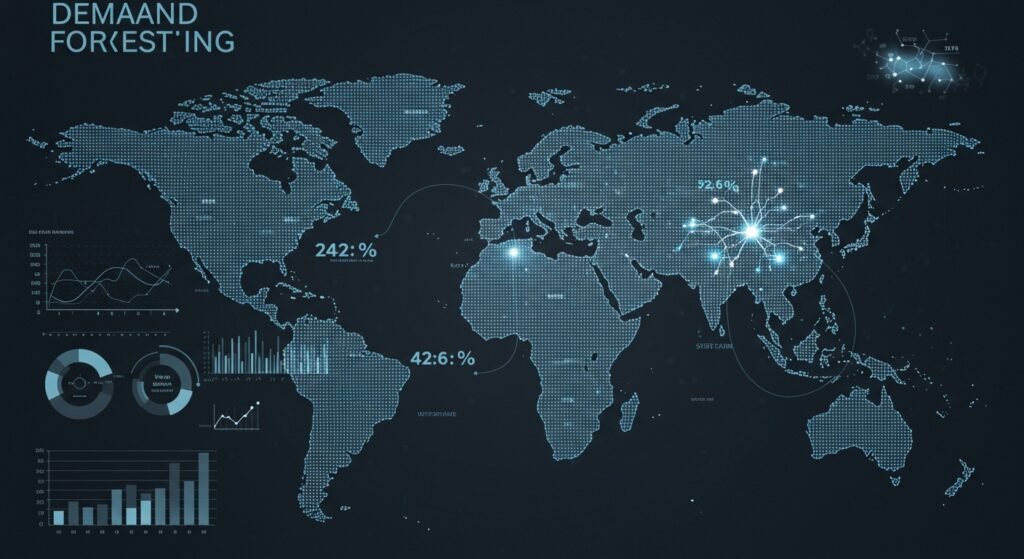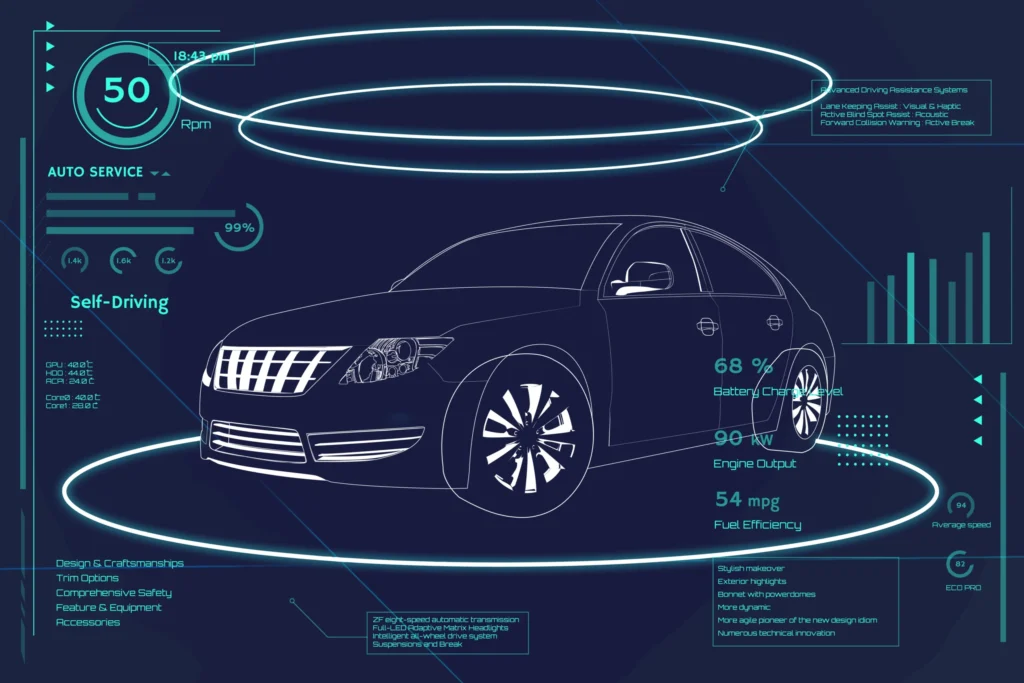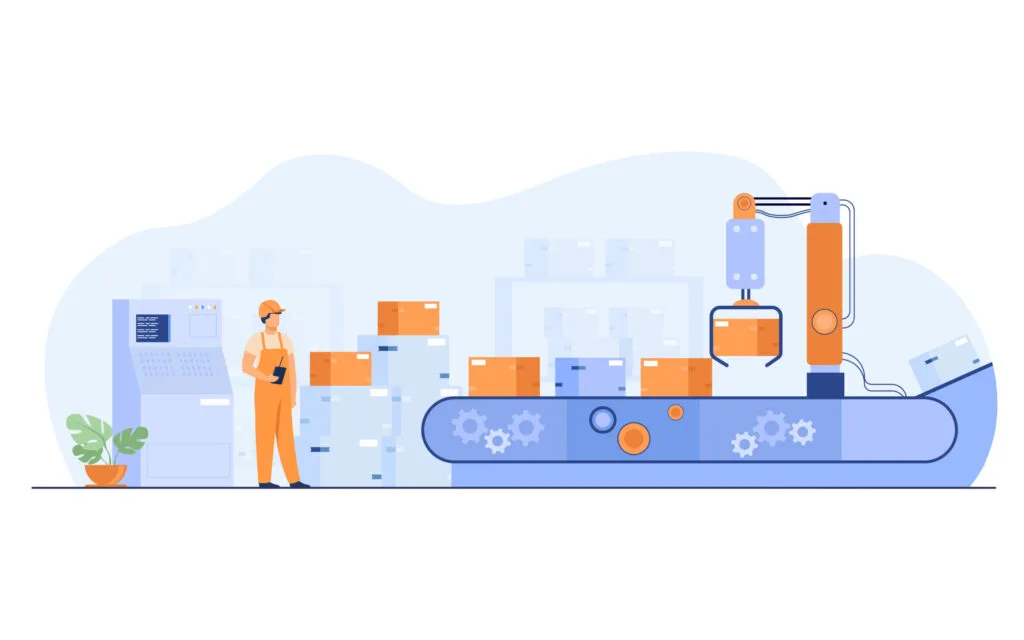In today’s rapidly evolving business landscape, accurate demand forecasting is no longer a luxury but a necessity. Companies strive to predict future product or service demand to optimize inventory, streamline supply chains, and enhance customer satisfaction. Enter AI-Powered Demand Forecasting, a revolutionary approach that leverages artificial intelligence and machine learning to analyze vast datasets, identify complex patterns, and generate predictions with unprecedented precision. This cutting-edge methodology is transforming how businesses anticipate market needs, moving beyond traditional statistical models to embrace a more dynamic and intelligent foresight.
Table of Contents
- The Evolution of Demand Forecasting
- How AI Transforms Forecasting
- Key Benefits of AI-Powered Demand Forecasting
- Challenges and Considerations
- Implementing AI in Your Forecasting Strategy
- The Future is Now: Embracing AI for Smarter Decisions
The Evolution of Demand Forecasting
Historically, demand forecasting relied heavily on statistical methods like moving averages, exponential smoothing, and regression analysis. While these methods provided a foundational understanding, they often struggled with volatility, seasonality, and the sheer volume of variables in modern markets. The advent of computing power brought more sophisticated econometric models, yet they still faced limitations in handling non-linear relationships and unstructured data. The digital age, characterized by an explosion of data, set the stage for a new paradigm, where the complexity of market trends demanded a more intelligent approach – paving the way for AI.
How AI Transforms Forecasting
Artificial intelligence, particularly machine learning, has revolutionized demand forecasting by enabling systems to learn from historical data, adapt to new information, and make predictions with remarkable accuracy. Unlike traditional models, AI can process and interpret diverse data sources, from sales history and promotional campaigns to external factors like weather, social media sentiment, and economic indicators. This holistic approach provides a richer, more nuanced understanding of underlying demand drivers.
Machine Learning Algorithms at Play
Various machine learning algorithms are at the heart of AI-Powered Demand Forecasting. Recurrent Neural Networks (RNNs) and Long Short-Term Memory (LSTM) networks are particularly adept at capturing temporal dependencies in time-series data, making them ideal for predicting future trends. Gradient Boosting Machines (GBMs) and Random Forests excel at identifying complex relationships between numerous features. These algorithms can uncover subtle patterns that human analysts or simpler statistical models might miss, leading to more robust and reliable forecasts. For more insights into AI’s broader applications, you might want to visit AI.org to understand the foundational research.
Big Data Integration and Analysis
The true power of AI in forecasting lies in its ability to ingest and process “big data.” This includes not just transactional sales data but also external datasets such as macroeconomic indicators, demographic shifts, competitive actions, and even real-time events. By integrating and analyzing these disparate data points, AI models can provide a 360-degree view of demand influences, leading to highly contextualized and accurate predictions. This capability is particularly crucial in industrial engineering and complex supply chains where numerous variables interact.
Key Benefits of AI-Powered Demand Forecasting
The adoption of AI in demand forecasting yields a multitude of benefits, directly impacting a company’s bottom line and operational efficiency.
Enhanced Accuracy and Reduced Errors
One of the most significant advantages is the dramatic improvement in forecast accuracy. AI models continuously learn and refine their predictions, minimizing the common errors associated with manual or less sophisticated methods. This enhanced precision directly translates to better decision-making.
Optimized Inventory Management
Accurate forecasts enable businesses to maintain optimal inventory levels. Overstocking is reduced, minimizing carrying costs, obsolescence, and waste. Understocking is also mitigated, preventing lost sales and customer dissatisfaction. This leads to substantial savings and improved cash flow.
Improved Customer Satisfaction
By ensuring products are available when and where customers want them, AI-driven forecasting directly contributes to higher customer satisfaction. Reduced lead times and fewer stockouts mean a smoother purchasing experience and stronger customer loyalty.
Cost Reduction and Efficiency Gains
Beyond inventory, AI forecasting optimizes production schedules, labor allocation, and logistics. By predicting demand more accurately, companies can reduce unnecessary expenditures, streamline operations, and achieve greater overall efficiency. For a deeper dive into how technology can further optimize your operations, explore our guide on Optimizing Supply Chains with Data Analytics.
| Feature | Traditional Forecasting | AI-Powered Forecasting |
|---|---|---|
| Data Types Handled | Structured, limited | Structured & Unstructured, extensive |
| Prediction Accuracy | Moderate, prone to error | High, continuously improves |
| Adaptability to Trends | Slow, manual adjustment | Rapid, automatic learning |
| Processing Time | Manual effort, time-consuming | Automated, near real-time |
| Key Insights | Basic correlations | Deep patterns, causal relationships |
Challenges and Considerations
While the benefits are compelling, implementing AI-Powered Demand Forecasting is not without its challenges. Data quality is paramount; “garbage in, garbage out” applies here more than ever. Integrating disparate data sources can be complex, and specialized AI/ML expertise is often required to build, train, and maintain models. Companies must also consider the ethical implications and explainability of AI models, especially in highly regulated industries. Overcoming these hurdles requires strategic planning, investment in talent, and a commitment to data governance.
Implementing AI in Your Forecasting Strategy
For businesses looking to integrate AI into their demand forecasting, a phased approach is often recommended. Start with clear objectives and identify high-impact areas. Ensure you have access to clean, relevant data and invest in the necessary infrastructure, whether cloud-based platforms or on-premise solutions. Partnering with AI specialists or leveraging off-the-shelf AI forecasting tools can accelerate the process. Continuous monitoring and recalibration of models are essential to ensure ongoing accuracy and adaptability to changing market conditions and industrial trends.
The Future is Now: Embracing AI for Smarter Decisions
The landscape of industrial engineering and supply chain management is being reshaped by advancements in artificial intelligence. AI-Powered Demand Forecasting stands at the forefront of this transformation, offering businesses a powerful tool to navigate market uncertainties, optimize operations, and gain a significant competitive edge. By harnessing the predictive power of AI, companies can move from reactive responses to proactive strategies, ensuring they are always one step ahead in meeting customer needs and achieving sustainable growth. The future of smart business decisions is here, powered by AI.


